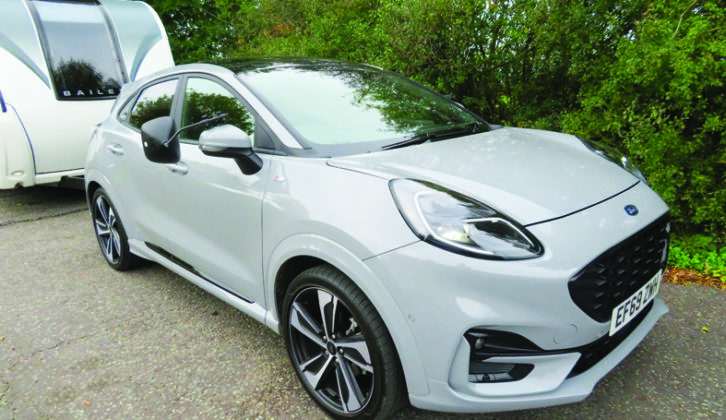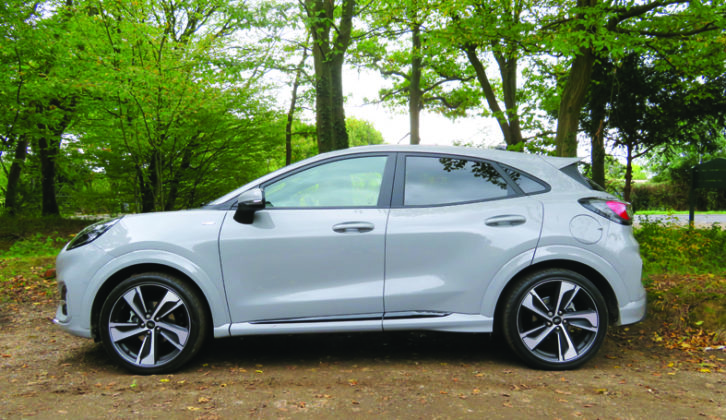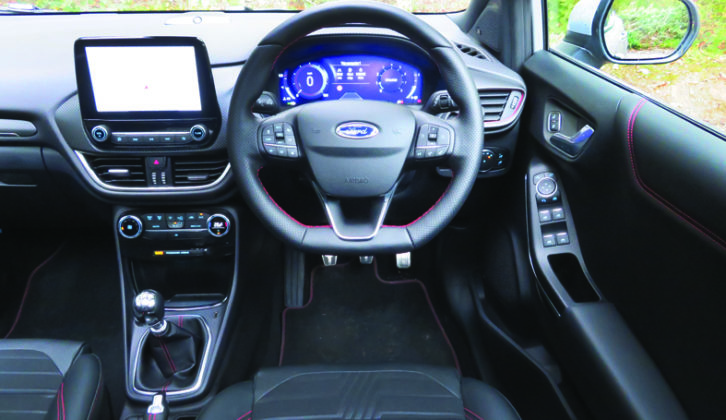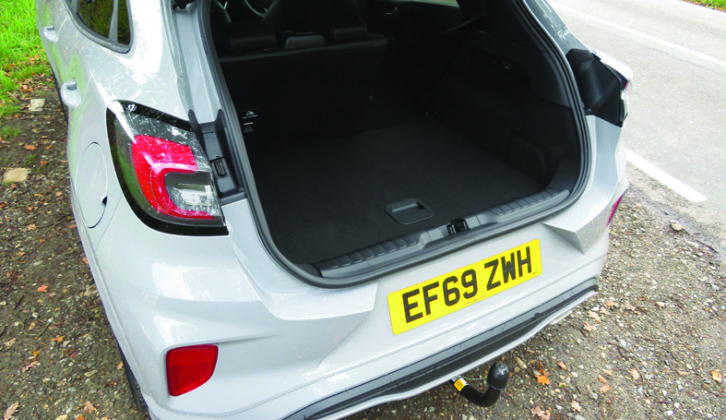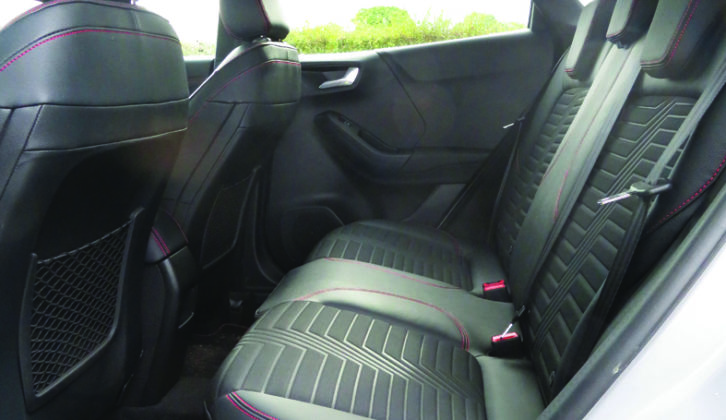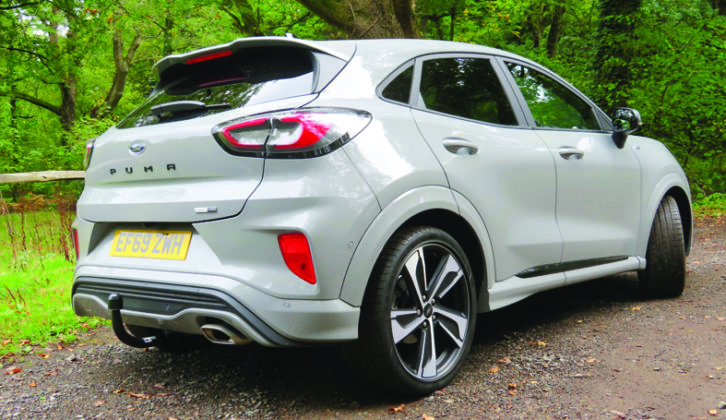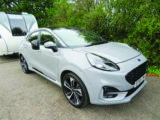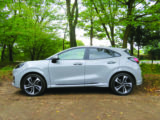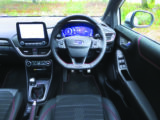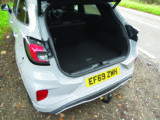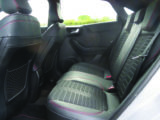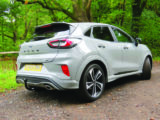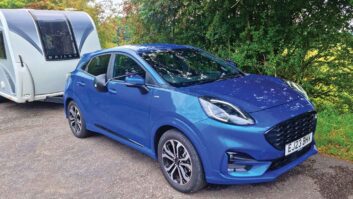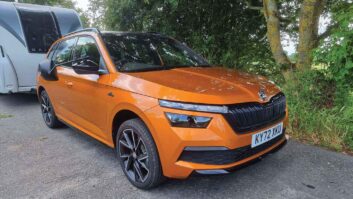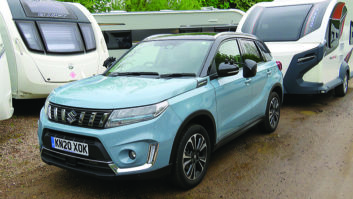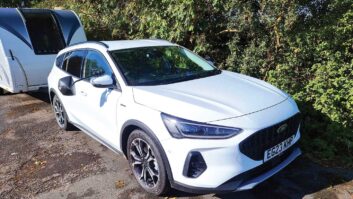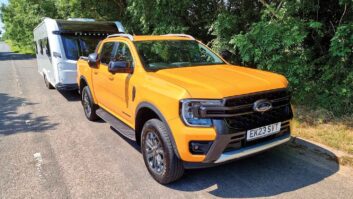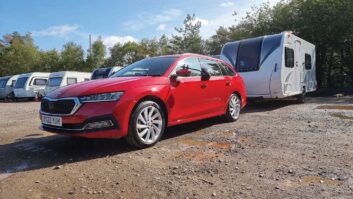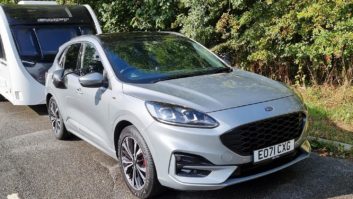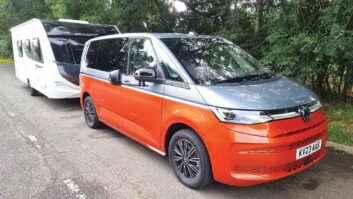Rather than a pint-sized coupé, this time around the Ford Puma is a small crossover. Under the skin, the Puma is based on the current Fiesta, so it promises to drive really well. However, that also makes the new Ford a small and light vehicle.
The model tested is the 1.0 Ecoboost MHEV ST-Line X. How well does it tow, and does mild-hybrid technology make this a fuel-efficient tow car?
Towing ability
Before a wheel is even turned, the Puma is hampered by its low kerb weight of 1280kg, and modest 1100kg towing limit.
The equivalent 150hp Škoda Kamiq provides kerb weights ranging from 1272kg to 1348kg, and a 1250kg towing limit. For an experienced tow car driver who is happy to two a caravan weighing between 85% and 100% of the kerbweight, the Škoda’s healthier towing limit is significant.
However, if you own the likes of a Swift Basecamp, with an MTPLM of 1013kg, or an Elddis Xplore 304, with an MTPLM of 1043kg, the Puma will make a sensible and legal match.
And what the Puma can tow, it tows well. We matched our test car to our long-term loan Bailey Discovery D4-4, with a MiRO of 1059kg – so a legal match when empty, but too heavy with a full load of touring kit and other baggage inside.
The Puma had no trouble pulling the Bailey up to speed, with the 155hp petrol engine helped by the Ford’s mild-hybrid drivetrain. As a mild hybrid, the Puma won’t run on electricity alone, but battery power can give the engine a boost and allows the engine to switch off while coasting.
Much above 40mph the Puma’s rate of acceleration eases off, but it still holds its own in the ebb and flow of traffic, so long as you don’t change up too early.
Once up to 60mph, the Puma’s 1.0-litre engine is happy enough in sixth until you reach an incline or face a headwind, when it’s easier to maintain momentum in fifth.
For such a small and light car, the Ford Puma tows with assurance at the legal limit. There’s the slightest shimmy when passing HGVs, but it quickly pulls the caravan straight, with little or no steering needed.
Turn off the motorway onto country roads, and the Puma’s firm suspension keeps car and caravan tied down. However, there’s a tendency for the Ford to follow the contours of the road, especially while you are accelerating.
If you need to pull away on a slope, the Puma’s conventional handbrake holds firm on a 1-in-10 gradient without needing to be pulled with undue force. However, there’s quite a bit of vibration when pulling away.
On site, the Puma is reasonably easy to manoeuvre, although thick rear pillars do rather hinder your view. A rear-view camera is part of the £900 Driver Assistance Pack, and makes hitching up much easier.
Solo driving
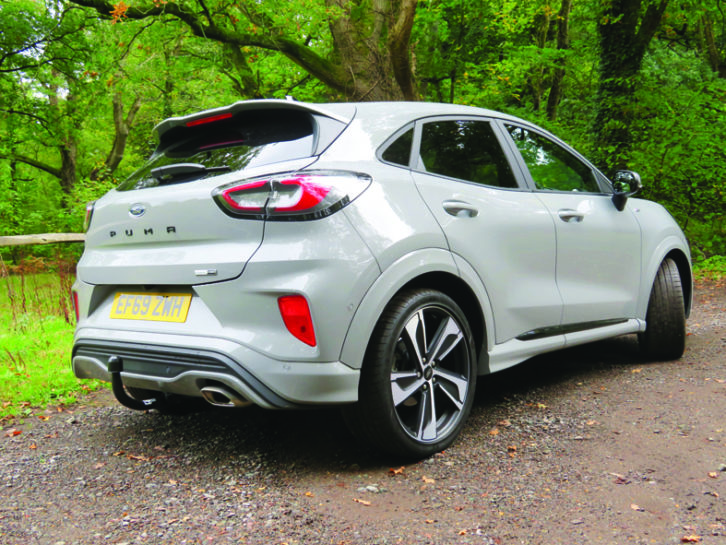
For the keen driver, there’s no better small crossover than the Puma. It’s really no great surprise that Ford decided to develop a high-performance version.
Even this 1.0-litre Ecoboost model is good fun on an empty country road, with balanced and agile handling, and very little body lean, thanks to the sports suspension fitted to ST-Line and ST-Line X models.
Driven more sedately, the ride is firm but not harsh. However, the Škoda Kamiq is smoother over rough roads.
There’s quite a bit of road noise at motorway speeds, but the engine settles down to a quiet hum at a steady cruise.
Practicality
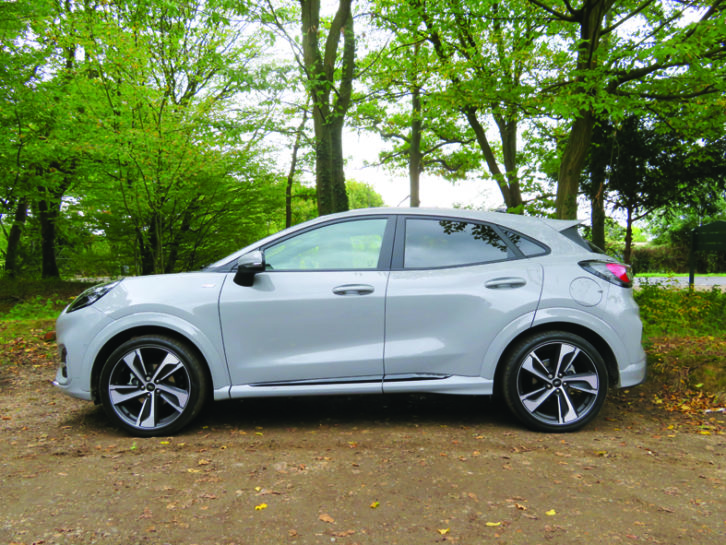
For such a small car, the Puma is a practical choice. In the front of the vehicle, the driver and passenger both have plenty of legroom, although the optional panoramic sunroof (£950) eats into the headroom.
The Ford Sync 3 infotainment system works well and sits high up on the dash, so it’s easy to glance at the screen without taking your eyes from the road for long.
There’s just enough legroom for adults in the back, but the narrow cabin is a squeeze for three. It’s a shame there are no air vents in the door pillars or between the front seats, and no USB ports to keep rear-seat passengers’ tablets and phones on charge.
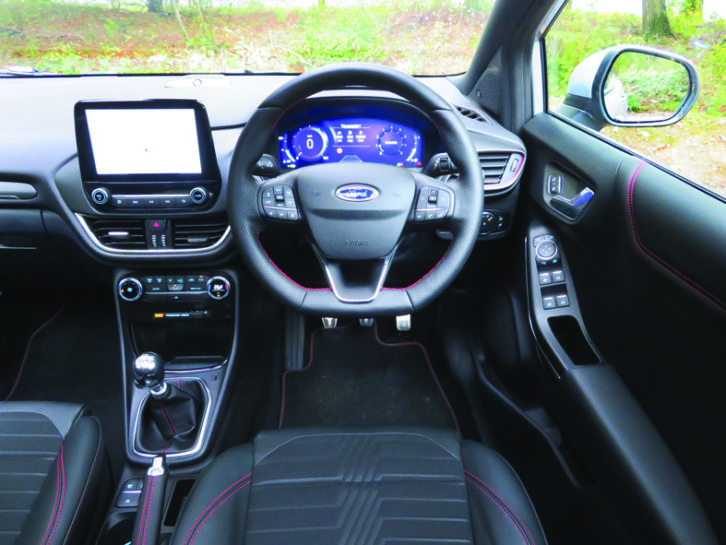
At first glance, the boot looks to be a reasonable size, but it’s actually bigger and more ingenious than it appears.
Lift the boot floor and there’s a deep plastic container, which Ford has rather dramatically named the ‘Megabox’. It’s ideal for storing dirty wellies, and has a plug, so any muck can be rinsed out. Stack the boot floor against the back seats and you can have one large and very deep space.
Buying and owning
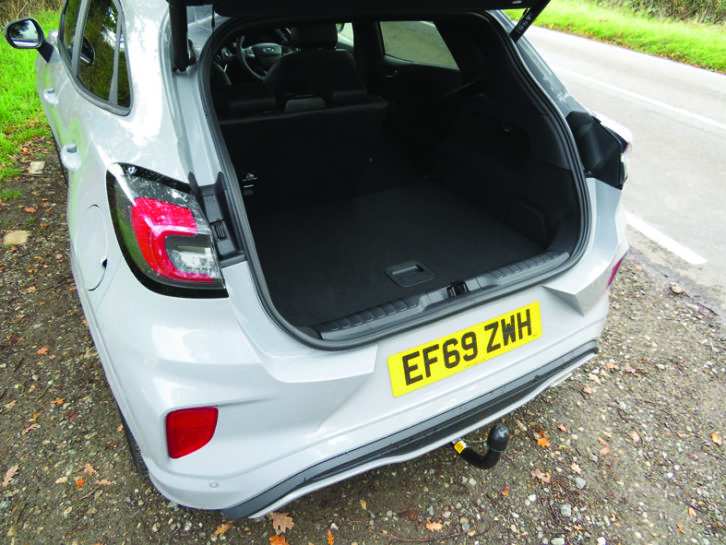
For such a small car, the Ford isn’t cheap, but What Car?‘s research suggests healthy discounts are there for the asking. What’s more, the long list of standard equipment goes some way to justifying the price, with part-leather upholstery, climate control, satellite navigation, digital instruments, cruise control, wireless charging for compatible smartphones, and more.
The hybrid drivetrain promises very good economy for a petrol-powered car, and we saw a respectable 27.7mpg towing the Bailey. Resale values are predicted to be strong.
Verdict
The Ford Puma is rather held back as a tow car by its low weight and meagre towing limit. But if your caravan is light enough to make a safe and sensible match, this small crossover has a great deal going for it.
See what we made of another vehicle from Ford, the Ford Puma 1.0 mHEV 155PS ST-Line when we put it to the test.
If you liked this… READ THESE:
Volkswagen Golf 2.0 TDI 115PS LIFE
If you’ve enjoyed reading this article, why not get the latest news, reviews and features delivered direct to your door or inbox every month. Take advantage of our brilliant Practical Caravan magazine SUBSCRIBERS’ OFFER and SIGN UP TO OUR NEWSLETTER for regular weekly updates on all things caravan related.
If you need to pull away on a slope, the Puma's handbrake holds firm on a 1-in-10 gradient without needing undue force
